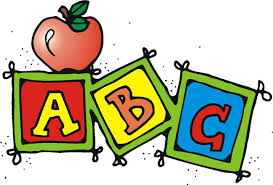WHAT DO YOU DO WHEN YOUR CHILD IS STUCK AT PHONICS?
Two Scenarios
This problem can go either way: either the child with Down syndrome is having a difficult time with learning phonics, or the child has learned letters and letter sounds but is stuck there. Either way, the ideas in this article can help.
I heard recently from Ashley, the mom of a child with DS-ASD. She’s just started to use the Fast Flash method and other methods I’ve blogged about, and says she’s “thrilled with his progress.” But she’s run into a problem.
She wrote, “He knows all of his letters and sounds, but when he comes to a word he doesn’t know, he goes to the letter or letter sound, and it stops the flow of the session; so we’re pretty much done at that point. I’m not sure how to move him forward from there.” So, for example, instead of reading “Mom,” he instead would say, “M! muh-muh-muh. M!’. The end.
The Core Problem
Letter sounds and names are essential, of course; reading skill doesn’t develop without that knowledge, and apps like Starfall ABC are excellent learning tools. But the reason why I wave the “sight words first” banner so often is this: the core of the problem is that learning to read first by high-interest sight words is meaningful; learning to read abstract symbols and sounds isn’t. Ashley’s son has learned sounds and names well; but he isn’t able to relate that yet to the idea that reading isn’t all about sounds and letters; it’s all about meaning.
Meaning Comes First
If I hand you a book written in Russian, a language whose symbols are largely different from our alphabet, how motivated would you be to make a great effort to learn those symbols? Why should you? How do those symbols relate to your life?
But let’s say you live for ice cream (and you’re 5 years old–or maybe you’re my age), would you be interested in learning the words for “ice cream, chocolate, vanilla,” and “strawberry”? You betcha. That’s why, along with letter sounds and names, we start our reading journey with Personal Books. In the case of Down syndrome and reading, Motivation Rules!
Ideas to Unstick You Both
But let’s say you’re in Ashley’s position. What do you do? Here are some ideas.
- Transition the child gradually into the realization that the ONLY GOAL in reading is for content, i.e., to understand what you’re reading. Learning symbols and sounds is not the end goal, only a means to the end.
- How? Begin with high interest Personal Books and their accompanying flash cards.
- Use the Fast Flash Method to teach the words for that book.
- Move the cards so fast (1 per second, as the blog explains) that he has no time to pronounce the initial letter. Nor should he have time to say the word aloud after you; his only job is to look. He doesn’t repeat the word (unless you’re testing him, which is quite different from teaching him.)
- In a session, when he gets stuck on a word and fixates only on the initial letter name and sound, I suggest this technique, which I call the “Pull Card” method:
- Have a small blank card in hand. As soon as he stops the learning flow with that fixation, quickly cover the whole word with the card. This jolts the mindset a bit.
- Then momentarily reveal that beginning letter again–without naming it, only giving the sound–and quickly pull the card away, saying the rest of the word.
- Example: the word he’s trying to read is “boy.” He stops the learning flow by repeating, “B. buh-buh-buh. B.” You cover the whole word for a moment, direct his attention to the card, briefly reveal the “B”, then say “Buh-ooooye” with emphasis on the rest of the word, not the initial sound, which he already knows and is stuck on. Enough repetition of this routine will eventually teach him that his real target is the whole word and its meaning, not just the initial letter.
- Re-training will do the trick; it takes time, but in the end, it will make much more sense to your child, and he’ll go for it.
Good luck!

Great tips as usual, Natalie!
Thanks, Yvette!